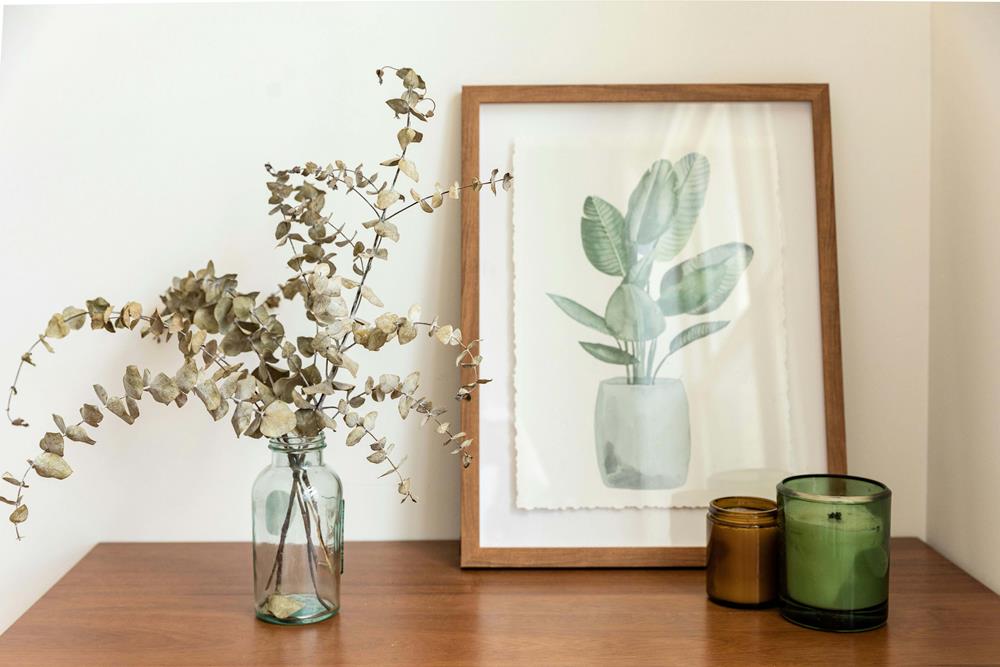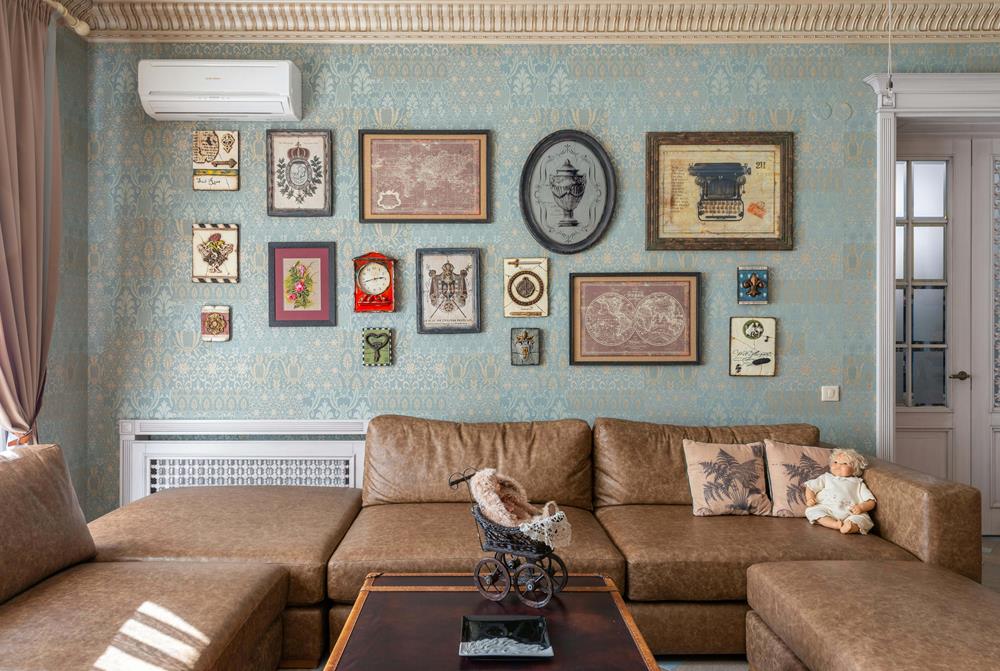Choosing the right frame for your art is like picking the perfect outfit for a special occasion. It’s not just about protecting the art; it’s also about making sure it looks its best. The right frame can make your art stand out, showing off its beauty and drawing people in. Think of it as giving your art a little boost to help it shine even brighter.
In this article, we’ll explore how to match your art with the perfect frame, whether it’s a cozy wooden one or a sleek metal one, and how to decide on the color and if you should add a mat around it. Let’s dive in and find out how to make your art look its best!
Understanding the Artwork
Before you start the hunt for the perfect frame, take a moment to really look at your artwork. The frame should serve as an extension of the piece, enhancing its beauty without overshadowing it. Here’s how to understand your artwork better and make informed framing choices.
Consider the Style and Era of the Artwork
- Style: Is your art modern, abstract, classical, or perhaps impressionistic? The style of the artwork will greatly influence the type of frame you choose. Modern and abstract pieces often pair well with simple, sleek frames, while classical art might look best in something more ornate.
- Era: The time period your artwork was created in or represents can also guide your framing choice. A piece that captures the essence of the Renaissance, for example, might suit a more traditional wooden frame, whereas a contemporary piece might call for a metal frame.
Pay Attention to the Colors in the Artwork
The colors within your artwork can be a great guide for choosing both frame and mat colors. You want to pick a frame that complements the dominant hues in the piece without competing with them. Sometimes, choosing a neutral frame can allow the colors in the art to truly pop.
Assess the Artwork’s Medium and Texture
The material and texture of your artwork can also influence your frame selection. For instance:
- Oil paintings often look good without a glass cover, possibly in an ornate frame that echoes the texture of the paint.
- Watercolors or prints, on the other hand, usually need the protection of glass paired with a frame that complements their delicate nature.
Think About the Future Home of the Artwork
Where you plan to hang the artwork can also affect your framing choice. Consider the decor of the room:
- Is it modern or traditional? This can help determine whether a wooden or metal frame is more appropriate.
- What are the dominant colors in the room? You may want to choose a frame that either complements or tastefully contrasts with your room’s color scheme.
Understanding your artwork deeply on these levels ensures that the frame you choose not only protects your piece but also presents it in the best possible light.
A Wooden or a Metal Frame?
When it comes to framing, the material of the frame itself plays a crucial role in complementing your artwork. The choice between a wooden or a metal frame can influence the overall appearance and feel of the art once it’s displayed. Here’s what you need to know to make an informed decision.
Wooden Frames
Wooden frames carry a timeless charm and warmth that can enhance virtually any piece of art. They are incredibly versatile and come in a wide range of styles, from rustic to refined.
- Aesthetic Appeal: Wooden frames offer a classic look that can complement both traditional and contemporary artworks. The natural texture of wood can add depth and warmth to the artwork.
- Variety: With wood, you have options like oak, pine, mahogany, and walnut, each offering different grains, stains, and finishes. This variety can help you find the perfect match for your artwork.
- Compatibility: Wooden frames tend to be a great match for portraits, landscapes, and classical art, as they can enhance the artwork’s natural elements.
Metal Frames
Metal frames offer a sleek and modern look, making them a popular choice for contemporary artworks. They provide a clean, minimalist edge that can make the colors and details of your art pop.
- Modern Feel: Metal frames, with their clean lines and smooth finishes, are ideal for modern or abstract pieces. They can enhance the artwork’s contemporary feel without overwhelming it.
- Durability: Metal frames are sturdy and durable, offering a good level of protection for the artwork. They’re particularly suitable for larger pieces that need extra support.
- Variety and Color: Though not as varied as wood, metal frames still offer a range of colors and finishes, including brushed silver, matte black, and glossy white, which can be selected to complement the artwork’s color scheme.
Comparing the Two
When deciding between a wooden or a metal frame, consider the following:
- The Artwork’s Style and Era: Wooden frames often suit classical, traditional, or rustic artworks, while metal frames are better suited to modern, minimalist, or abstract pieces.
- Room Decor: Think about where the artwork will hang. Wooden frames can add warmth to a room and often complement traditional or cozy decors, while metal frames can add a touch of modernity and sleekness to a space.
- Personal Preference: Ultimately, your personal taste should guide your choice. Which frame material do you feel enhances the beauty of your artwork and fits your home’s style?
Whether you choose a wooden or a metal frame, the key is to ensure it complements the artwork and aligns with the space where it will be displayed, enhancing the overall aesthetic appeal and feel of the room.
Frame Color
Selecting the right color for your picture frame is as pivotal as choosing its material. The color not only affects how the artwork is perceived but also how it integrates with its surroundings. Here’s how to navigate the decision-making process regarding frame color.
Matching with Artwork
- Complementing Colors: The most straightforward approach is to pick a frame color that complements the dominant colors in the artwork. Look for hues within the piece that you can highlight through the frame color. This method ensures a harmonious and balanced look.
- Contrasting Colors: For a more dynamic and eye-catching display, consider choosing a frame color that contrasts with the main colors in the artwork. This can help the piece stand out but should be done cautiously to avoid overwhelming the art.
Considering Room Decor
- Integration with the Space: The frame color should not only match the artwork but also fit well within the room it will inhabit. Consider the color scheme of the room, including walls, furniture, and decorations. A frame that ties these elements together can enhance the cohesiveness of the space.
- Creating a Focal Point: If you aim to make the artwork a focal point in the room, selecting a frame color that stands out while still respecting the overall color scheme can draw attention directly to the piece.
Tips for Choosing Frame Color
- Neutral Tones: When in doubt, neutral colors such as black, white, gray, or natural wood tones are safe and versatile choices that can complement a wide range of artwork and room decors.
- Metallic Finishes: Gold, silver, and bronze frames can add a touch of elegance and are particularly effective for highlighting certain art styles or adding a luxurious feel to the space.
- Sample Matching: Before making a final decision, it’s helpful to use samples of frame materials and colors against your artwork in the intended room. This can provide a clearer picture of how the colors interact with both the art and the room’s lighting.
Choosing the right frame color is an art in itself, requiring a balance between complementing the artwork and fitting into the room’s aesthetic. By considering both the artwork’s needs and the room’s decor, you can select a frame color that enhances the art’s beauty and ensures it makes the desired impact in the space.
Is It Necessary to Add a Mat?
Adding a mat to your framed artwork isn’t just a design choice; it’s also a consideration for the art’s preservation. While not every piece of art requires a mat, understanding when and why to use one can significantly impact the visual appeal and longevity of your artwork.
Benefits of Adding a Mat
- Visual Appeal: Mats can create a visual breathing room around the artwork, enhancing its presentation and drawing the viewer’s eye toward the art. They can add depth and dimension and often make the artwork appear more professional and polished.
- Protection: A mat separates the artwork from the glass, preventing the art from sticking to the glass, which is especially important in humid environments. This space allows the artwork to expand and contract with changes in temperature and humidity, reducing the risk of damage.
- Focus and Color Accentuation: Mats can be used to accentuate colors within the artwork or to bring focus to the piece. Choosing a mat color that complements or subtly contrasts with the artwork can highlight certain hues or details in the piece.
Choosing the Right Mat
- Color: Select a mat color that complements both the artwork and the frame. Neutral colors like white, black, or beige are safe choices, but colored mats can be used to bring out specific details or colors in the artwork.
- Texture: The texture of the mat can also contribute to the overall aesthetic of the framed piece. A textured mat can add an extra layer of interest and depth.
- Size: The width of the mat should be considered carefully. A larger mat can give more prominence to smaller pieces, making them more striking within a space. Conversely, a thin mat might be more appropriate for larger artworks or in frames that are already quite wide.
When to Skip the Mat
While mats offer numerous benefits, there are situations where adding one might not be necessary or preferred:
- Large Scale Works: For very large pieces of art, a mat might be impractical or detract from the impact of the artwork.
- Canvas Paintings: Canvas artworks, especially those stretched over a frame, often don’t require mats since they’re designed to display without glass, and the texture of the canvas adds its own natural border.
- Personal Preference: Ultimately, the choice to add a mat comes down to personal taste and the specific needs of the artwork and its setting. Some may prefer the sleek simplicity of art framed directly against the glass, especially in modern, minimalistic decor settings.
Deciding whether to add a mat is an integral part of the framing process, affecting both the aesthetics and preservation of the artwork. By considering the artwork’s style, the frame’s design, and the overall decor of the space where it will hang, you can make an informed decision that enhances and protects your art for years to come.
Conclusion
Finding the perfect frame for your art is a blend of art and science, mixing personal taste with thoughtful consideration of the artwork’s needs and the space it will live in. Whether you lean towards a classic wooden frame or a sleek metal one, choose a bold or neutral color, or decide to add a mat, the goal is always to enhance and protect your precious artwork. Remember, the right frame not only showcases the beauty of the art but also integrates it into your living space, making it a part of your home’s story. So take your time, consider your options, and choose a frame that will make your art—and your space—shine.
Additional Idea
When crafting the ideal frame, there are numerous aspects to ponder, and the process might appear daunting. At Picture Framing Melbourne, you’re greeted with an extensive selection of frame designs, hues, and forms to choose from.






